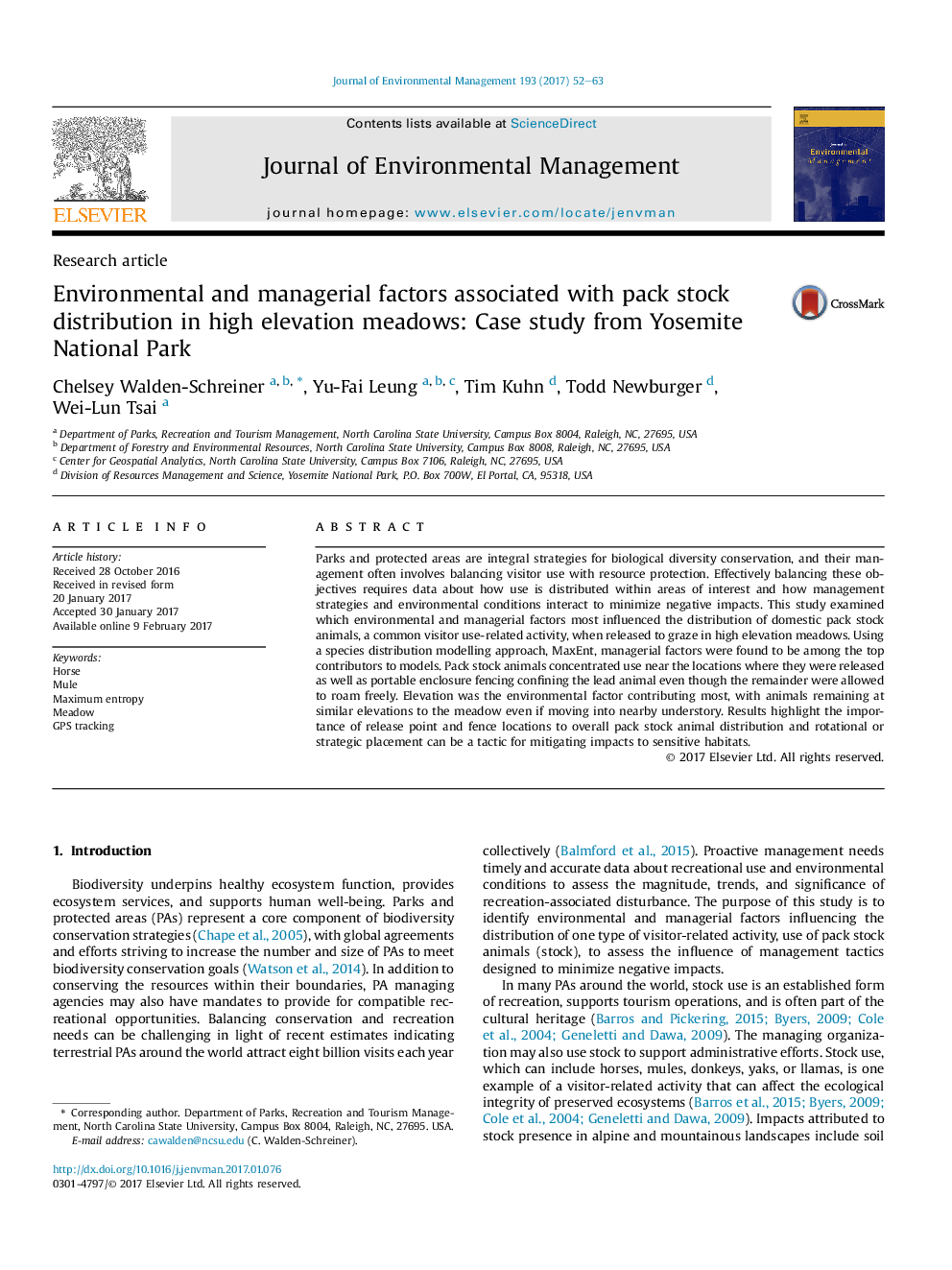| Article ID | Journal | Published Year | Pages | File Type |
|---|---|---|---|---|
| 5116809 | Journal of Environmental Management | 2017 | 12 Pages |
•Pack animal use of natural habitats was assessed using GPS tracking and MaxEnt modelling.•Relative probability of presence was greatest near release points and fences.•Elevation contributed to distribution with animals more likely at meadow elevations.•Results promote strategic release point and fence use to influence stock use patterns.
Parks and protected areas are integral strategies for biological diversity conservation, and their management often involves balancing visitor use with resource protection. Effectively balancing these objectives requires data about how use is distributed within areas of interest and how management strategies and environmental conditions interact to minimize negative impacts. This study examined which environmental and managerial factors most influenced the distribution of domestic pack stock animals, a common visitor use-related activity, when released to graze in high elevation meadows. Using a species distribution modelling approach, MaxEnt, managerial factors were found to be among the top contributors to models. Pack stock animals concentrated use near the locations where they were released as well as portable enclosure fencing confining the lead animal even though the remainder were allowed to roam freely. Elevation was the environmental factor contributing most, with animals remaining at similar elevations to the meadow even if moving into nearby understory. Results highlight the importance of release point and fence locations to overall pack stock animal distribution and rotational or strategic placement can be a tactic for mitigating impacts to sensitive habitats.
